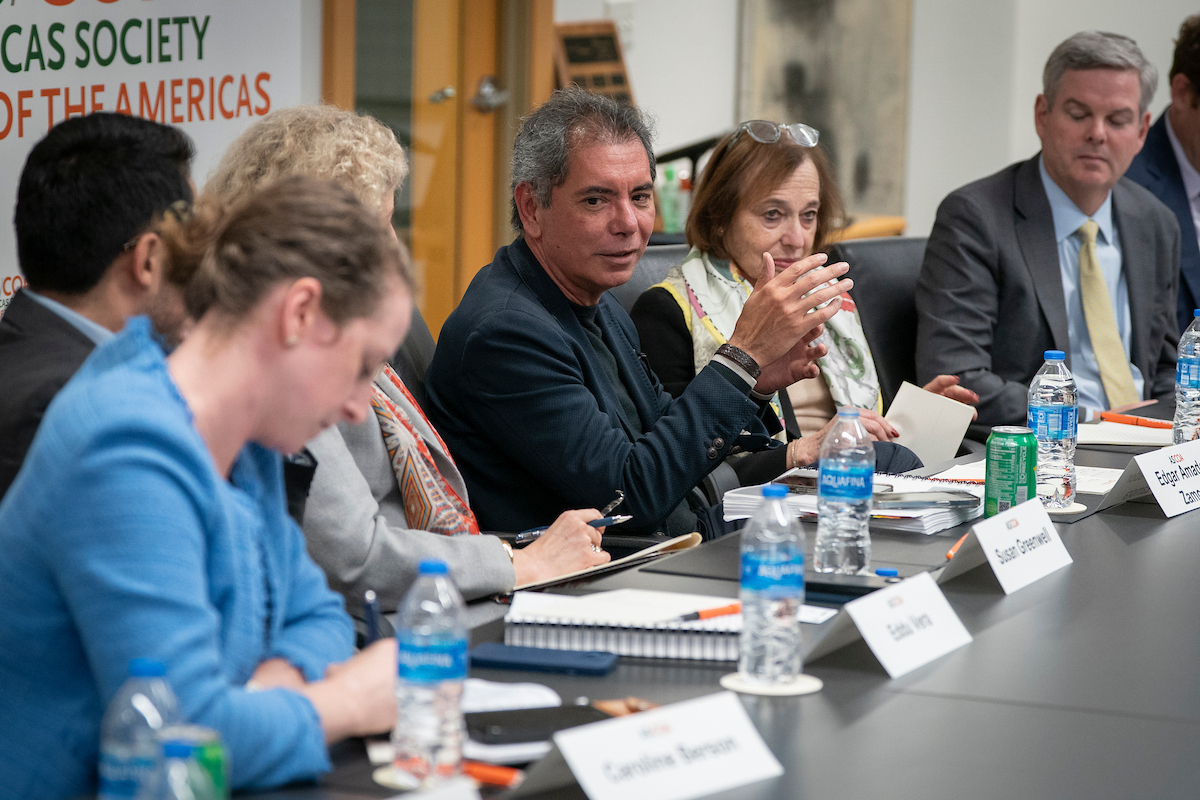Peru's Humala Picks Moderates for Top Cabinet Posts
Peru's Humala Picks Moderates for Top Cabinet Posts
In the countdown to his July 28 inauguration, Ollanta Humala announced key cabinet appointees that demonstrate moderate choices, reassuring investors. But, with his approval ratings sliding, can he win the Peruvian public's support?
With a week to go before Ollanta Humala’s inauguration, some observers still wonder which way the next Peruvian president’s political winds will blow. Will the former military-officer-turned-nationalist politician follow the lead of Venezuela’s expropriating President Hugo Chávez or the more moderate ex-leader of Brazil Luiz Inácio Lula da Silva? For those seeking clues in Humala’s cabinet picks, he appears to not only opt for the second path but also follow in some of the same footsteps as current President Alan García. A day after Humala won the June 5 runoff vote, Peru’s stock market plunged 12.5 percent. But after Humala began making cabinet announcements this week, the Financial Times wrote of “renewed optimism over Peru’s investment climate.” Still, given the tumble Humala’s approval ratings have taken since the election, will the Peruvian public follow suit and support their new president after he takes office July 28?
Humala indicated the direction of his cabinet picks on July 17, when he decided to retain Central Bank head Julio Velarde for another five-year term. Bloomberg notes Velarde is credited with tripling Peru’s national reserves to $47 billion since his 2006 appointment. But the president-elect surprised onlookers July 20 when he selected the orthodox economist Luis Miguel Castilla as finance minister over the academic economists who counseled him during the election. The choice of Castilla, who served as deputy finance minister until Friday, is seen as another step to reassure investors and continue the country’s strong economic performance. A report released July 13 by the UN Economic Commission for Latin America and the Caribbean counted Peru among the region’s fastest-growing economies and forecast that the Andean country will see 7.1 percent GDP growth for 2011.
Salomon Lerner, the choice for prime minister and leader of the next cabinet, represents another moderate choice. The millionaire ran Humala’s campaign, helping him remake his image from the vocal critic of free-market economics who lost the 2006 election to the centrist victor who underwent “lulanización” in 2011, as Peruvian daily La Republica put it.
Humala announced the other key cabinet posts of foreign and energy ministers on Thursday. He selected Rafael Roncagliolo—a former journalist and founder of electoral-monitoring agency Transparencia, to head the Ministry of Foreign Relations. But Carlos Herrera Descalzi, nominated for energy and mines minister, may find himself holding a more difficult position. Peru has experienced repeated and at times violent mining protests over issues such as environmental concerns and revenue allocation. Humala also announced plans for a new windfall tax on mining profits, meaning Herrera will be tasked with reassuring investors that the sector remains competitive.
But even as Humala’s cabinet picks show growing market confidence in the next president, it remains to be seen whether he can hold on to the confidence of the general public. During his tenure, García’s approval rating suffered because, despite declining poverty rates, the benefits of burgeoning economic growth fell short of reaching Peru’s rural poor. The next president’s cabinet picks demonstrate continuity but could also spark opposition. Velarde, the Central Bank pick, opposes a proposal by Humala’s Gana Peru coalition to raise the minimum wage by over 20 percent. On Thursday, Humala appeared to be trying to calm public nerves over the cabinet nominations, tweeting: “I ask the Peruvian people to have confidence; the cabinet represents all of Peru.” Moreover, Humala’s brother Alexis caused a recent scandal when he traveled to Russia seeking deals with Gazprom. The president-elect said the trip was not official, but Moscow disagreed. As a result, the 70 percent approval rating that Humala achieved after winning the election fell to 41 percent this week. As The Economist reports, Humala may have found “that his honeymoon with Peruvian voters is over even before his term has begun.”
Learn more:
- President-elect Ollanta Humala’s website.
- Reuters Factbox offers a “who’s who” in Humala’s cabinet.
- El Comercio profiles a number of Humala’s cabinet appointments.
- Get updates about cabinet appointees via the Twitter feeds of Gana Perú (@ganaperu) and Ollanta Humala (@Ollanta_HumalaT).








